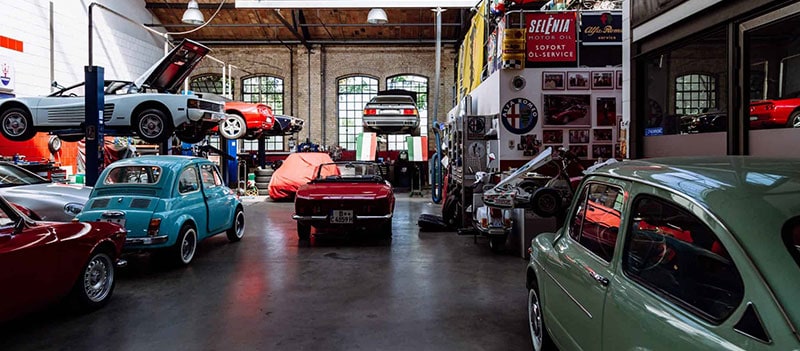Restoring a classic car is a labor of love that requires patience, skill, and dedication. It is a rewarding experience that allows you to bring a piece of automotive history back to life. However, it can also be a daunting task, especially if you are new to car restoration. In this article, I will provide you with a step-by-step guide on how to restore a classic car.
Before you begin, it’s important to understand that classic car restoration is not a one-size-fits-all process. Each car is unique and may require different restoration techniques. It’s important to take the time to research your specific car model and learn about its history, features, and common problems.
Assessing the Condition of Your Classic Car
The first step in restoring a classic car is to assess its condition. This will give you an idea of the scope of the restoration project and help you determine what needs to be done. Begin by giving the car a thorough inspection. Look for signs of rust, damage, wear, and tear. Check the engine, transmission, brakes, suspension, and steering.
Once you have assessed the condition of your classic car, create a checklist of everything that needs to be repaired, replaced, or restored. This will help you stay organized throughout the restoration process.
Creating a Restoration Plan
After assessing the condition of your classic car and creating a checklist, it’s time to create a restoration plan. This plan should include a timeline, budget, and a list of tasks that need to be completed.
Start by setting a realistic timeline for the restoration project. Depending on the condition of your classic car, the restoration process can take anywhere from a few months to a few years.
Next, determine your budget. Restoring a classic car can be expensive, so it’s important to set a budget and stick to it. Factor in the cost of parts, labor, and tools.
Finally, create a list of tasks that need to be completed. This list should include everything from disassembling the car to reassembling it. Prioritize the tasks based on their level of importance and difficulty.
Gathering the Necessary Tools and Equipment
Before you begin the restoration process, you will need to gather the necessary tools and equipment. This includes basic hand tools, power tools, specialized tools, and safety equipment.
Some of the basic hand tools you will need include screwdrivers, pliers, wrenches, and sockets. Power tools like drills, saws, and sanders can make the restoration process easier and faster. Specialized tools like a compression tester, brake bleeder, and timing light are also necessary.
Safety equipment like gloves, safety glasses, and a dust mask are important for protecting yourself during the restoration process.
Disassembling the Car
Once you have gathered the necessary tools and equipment, it’s time to disassemble the car. This involves removing all the parts and components from the car, including the engine, transmission, suspension, and interior.
It’s important to label each part and component as you remove them to make reassembly easier. Take photos and notes to help you remember how everything fits together.
Bodywork and Paint Restoration
After disassembling the car, it’s time to start on the bodywork and paint restoration. This involves repairing any rust or damage, sanding the body to remove old paint, and applying a new coat of paint.
Begin by repairing any rust or damage to the body. This may involve welding new metal panels or using body filler to fill in dents and scratches. Sand the body to remove any old paint and prepare it for a new coat.
Apply a coat of primer to the body to protect it from rust and prepare it for paint. Apply several coats of paint, allowing each coat to dry before applying the next. Finish by applying a clear coat to protect the paint and give it a glossy finish.
Engine and Mechanical Restoration
After completing the bodywork and paint restoration, it’s time to focus on the engine and mechanical restoration. This involves rebuilding the engine, replacing worn or damaged parts, and tuning the engine for optimal performance.
Begin by disassembling the engine and inspecting each part for wear and damage. Replace any worn or damaged parts and rebuild the engine with new gaskets and seals.
Tune the engine by adjusting the timing, carburetor, and ignition system. Test the engine to ensure it is running smoothly and efficiently.
Interior Restoration
After completing the engine and mechanical restoration, it’s time to focus on the interior. This involves repairing or replacing the seats, dashboard, carpet, and other interior components.
Begin by cleaning the interior and removing any old or damaged parts. Repair or replace the seats, dashboard, and carpet as necessary. Install new upholstery and headliner.
Reassembling the Car
After completing the bodywork, paint, engine, mechanical, and interior restoration, it’s time to reassemble the car. This involves putting all the parts and components back together in the correct order.
Begin by referring to your notes and photos from the disassembly process to ensure everything is put back in the correct place. Reconnect all the wiring, hoses, and pipes. Install the engine, transmission, suspension, and interior components.
Testing and Troubleshooting
After reassembling the car, it’s important to test it and troubleshoot any problems. This involves starting the engine, checking the brakes, steering, and suspension, and taking the car for a test drive.
If you encounter any problems, refer to your restoration plan and checklist to determine the cause and the solution. Make any necessary repairs or adjustments.
Maintenance and Preservation Tips
Once you have completed the restoration process, it’s important to maintain and preserve your classic car. This involves regular maintenance, including oil changes, tune-ups, and inspections.
Store your classic car in a dry, climate-controlled environment to protect it from rust and damage. Avoid driving it in harsh weather conditions or on rough roads.
Restoring a classic car is a challenging but rewarding experience. It allows you to bring a piece of automotive history back to life and create a beautiful and functional work of art. By following this step-by-step guide, you can restore your classic car with confidence and skill.

